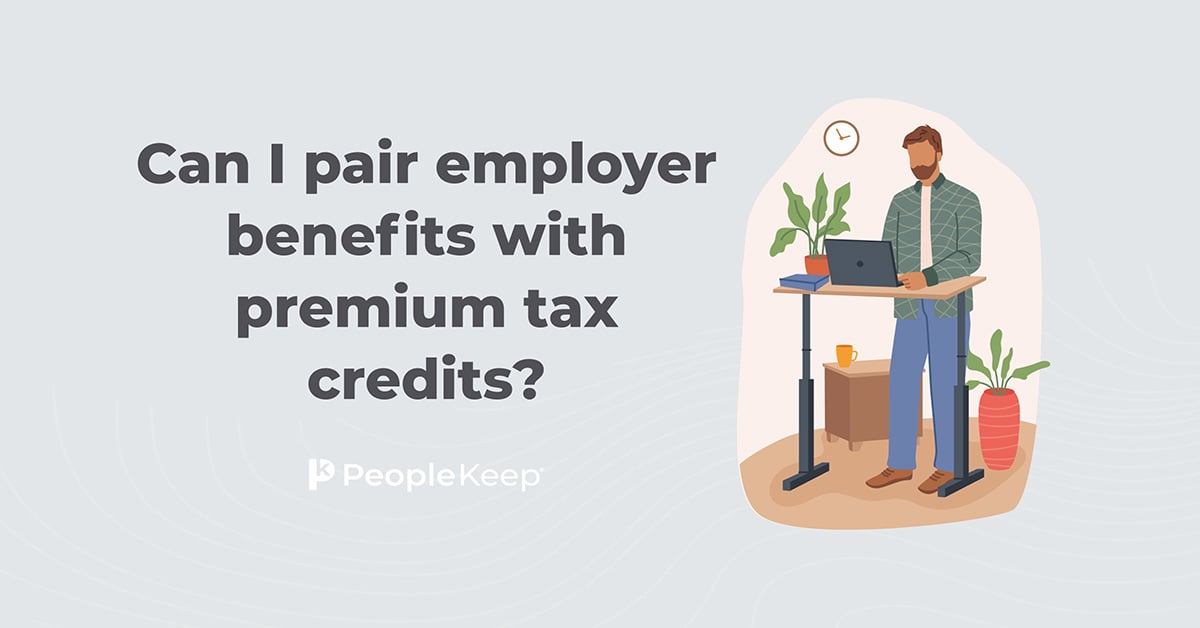Pre-tax vs. after-tax medical premiums
By Holly Bengfort on February 15, 2024 at 5:58 AM
For employers and employees, health insurance costs are often one of the largest expenses to budget for each month.
As healthcare costs continue to rise, consumers are looking for ways to save money. One way to do this is by getting a tax break on your health insurance premiums.
However, getting tax savings on your health insurance premiums differs based on whether you have a pre-tax premium or an after-tax premium.
In this article, we'll discuss the tax deductibility of medical premiums—both pre- and after-tax—and how you can use these deductions to your advantage.
Takeaways from this blog post:
- Pre-tax medical premiums are health insurance premiums deducted from your paycheck before your employer withholds income taxes or payroll taxes.
- These premiums are typically available for employer-sponsored health insurance plans. They can save individuals up to 40% on income and payroll taxes.
- After-tax medical premiums are an alternative option if an individual doesn’t want to participate in their employer's pre-tax plan or if their employer doesn’t offer a pre-tax plan. When filing income taxes, you may be able to deduct these premiums
What are pre-tax medical premiums?
First, let's talk about pre-tax medical premiums. A pre-tax medical premium is a health insurance premium your employer deducts from your paycheck before any income taxes or payroll taxes are withheld and then pays to the insurance company on your behalf.
You must be enrolled in your employer-sponsored health insurance plan to pay your premium with pre-tax money.
Employer-sponsored plans with qualifying pre-tax premiums include the following:
- Major medical coverage
- Supplemental/voluntary coverage
- Healthcare spending account contributions, such as health savings accounts (HSAs) and flexible spending accounts (FSAs)
- Employer-sponsored reimbursements for medical insurance premiums
You can confirm if your health premiums are pre-tax by viewing your pay stub and looking for a column titled “Deductions” or something similar. If your health premium is in this column and your employer deducts it from your gross pay, it's a pre-tax premium.
Your employer may also offer you tax-free employee benefits like a health reimbursement arrangement (HRA). While employees don’t contribute to an HRA, all reimbursements for qualifying medical expenses, including insurance premiums, are tax-free as long as you have minimum essential coverage (MEC).
Tax deductions for pre-tax premiums
There are a lot of advantages to having your medical insurance premium deducted on a pre-tax basis from your paycheck. If your employer sets up a premium-only plan (POP) or a Section 125 cafeteria plan, you can have your employer deduct insurance premium contributions from your payroll on a pre-tax basis.
Having a portion of your income allocated toward a pre-tax health benefit can save you up to 40% on income and payroll taxes for that portion. Also, pre-tax medical premiums are excluded from federal income tax, Social Security tax, Medicare tax, and typically state and local income tax.
You can also reduce the amount of taxes that you owe with exclusions, deductions, or credits. These three subsidies are slightly different, but all boast big advantages. Essentially, deductions and exemptions both reduce your taxable income, while credits reduce your tax.
After-tax medical premiums
Next, let's talk about after-tax medical premiums. If you don't want to participate in your employer's pre-tax plan, or if your employer doesn't offer a pre-tax plan, you may be able to deduct your medical premiums on an after-tax basis.
Unless you have one of the eligible healthcare spending accounts, any copays, prescription costs, and payments you make before meeting your deductible are also considered after-tax medical expenses.
Individually purchased plans with qualifying after-tax premiums include:
- Major medical coverage, such as purchasing individual health insurance through the Health Insurance Marketplace
- Supplemental/voluntary coverage, such as accident or disability insurance
You can drop coverage that's paid with after-tax dollars at any time, so a good reason to go this route is if you anticipate dropping the coverage and enrolling in another plan in the middle of the year because you qualify for a special enrollment period.
Tax deductions for after-tax premiums
While different from pre-tax premiums, after-tax plans can still offer some savings. For example, you can still list premiums as an itemized deduction1 when you file your income taxes for all medical expenses and premiums that exceed 7.5% of your income. Additionally, most self-employed taxpayers (including business owners) can deduct health insurance premiums using Schedule 1 for Line 162 on Form 1040.
If you paid your premiums with pre-tax dollars, you don't qualify for this credit since you already received a tax break when your employer deducted your premium from your paycheck. The pre-tax option allows you to receive the full tax benefit because all your premiums are tax-free. Additionally, you can’t deduct your insurance premium if you're eligible for an employer-sponsored, pre-tax health plan and decline that coverage.
HRAs deliver pre-tax benefits with after-tax flexibility
An HRA is an employer-funded, tax-advantaged health benefit that allows employees and employers to save on medical costs. Your employer sets aside a specific amount of tax-free dollars for you to pay for your healthcare expenses every month.
With a standalone HRA, such as a qualified small employer HRA (QSEHRA) or individual coverage HRA (ICHRA), you purchase an individual health insurance plan with your own money. Then, your employer reimburses you for your monthly premiums and other eligible out-of-pocket medical expenses up to the set allowance amount.
The reimbursements for medical care are made on a tax-free basis as long as you have MEC, so you get the same tax benefits as you would with a traditional pre-tax plan. In other words, employees don't need to claim an income tax deduction for an expense reimbursed under the HRA.
Moreover, you'll also get the benefits of an after-tax plan. You choose the plan that works best for your needs from the Health Insurance Marketplace or the private exchange. Because your insurance plan isn’t tied to your employer, only the HRA is, you can take it with you if you leave your employer. However, if you leave your employer, you lose your allowance because, unlike an HSA, HRA funds stay with the employer.
Conclusion
If your health plan is employer-sponsored, you'll be able to pay for premiums on a pre-tax basis, saving you money on income and payroll taxes. If you purchase your own individual plan, you'll have more flexibility but will pay more taxes. If you have an HRA, you can get the best of both worlds by selecting an insurance plan that works for you and receiving an allowance for tax-free reimbursements.
PeopleKeep doesn’t provide tax or legal advice. This article is for informational purposes only. Reach out to a tax professional if you have further questions.
This article was originally published November 6, 2020. It was last updated on February 15, 2024.
Check out more resources
See these related articles

Does QSEHRA disqualify employees from individual premium tax credits?
Learn how a QSEHRA affects premium tax credits. Understand if employees can still qualify for tax credits when offered a QSEHRA by their employer.

Can I pair employer benefits with premium tax credits?
Discover if you can combine employer benefits with premium tax credits when it comes to health insurance. Get all the answers in this informative post.

Guide to premium tax credits for health insurance
See how premium tax credits can lower health insurance costs. Our guide provides the information you need to navigate this important aspect of healthcare.



